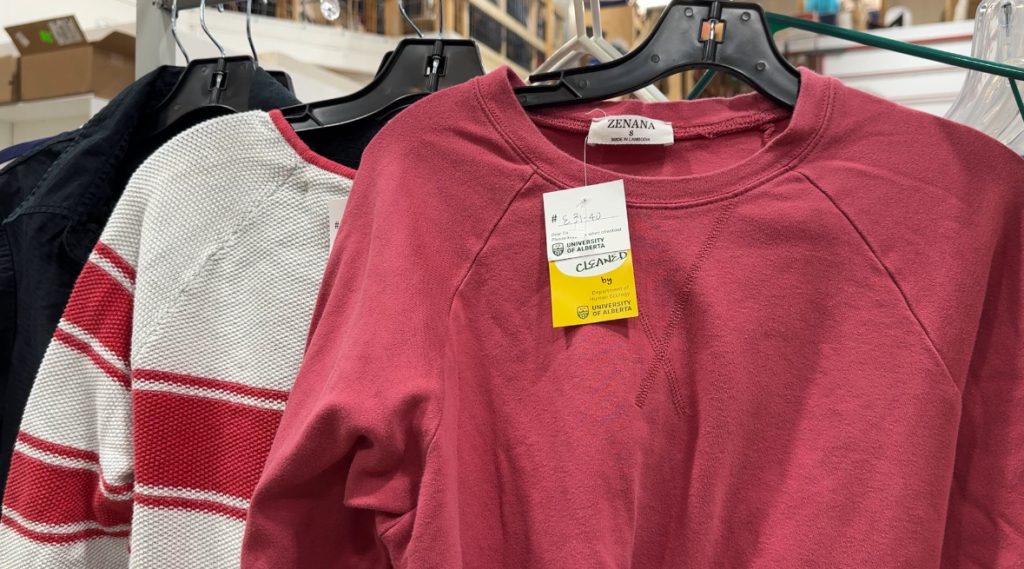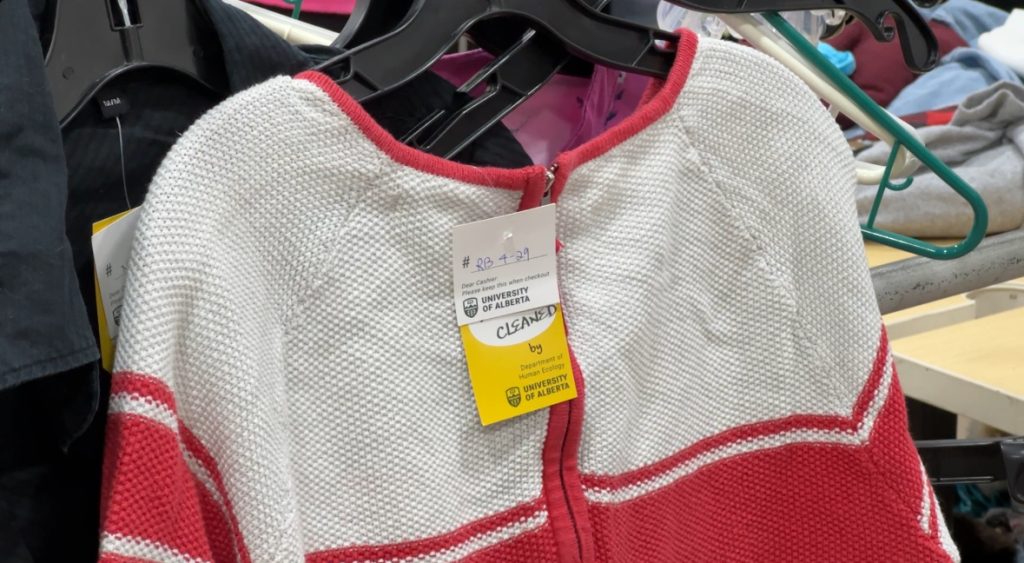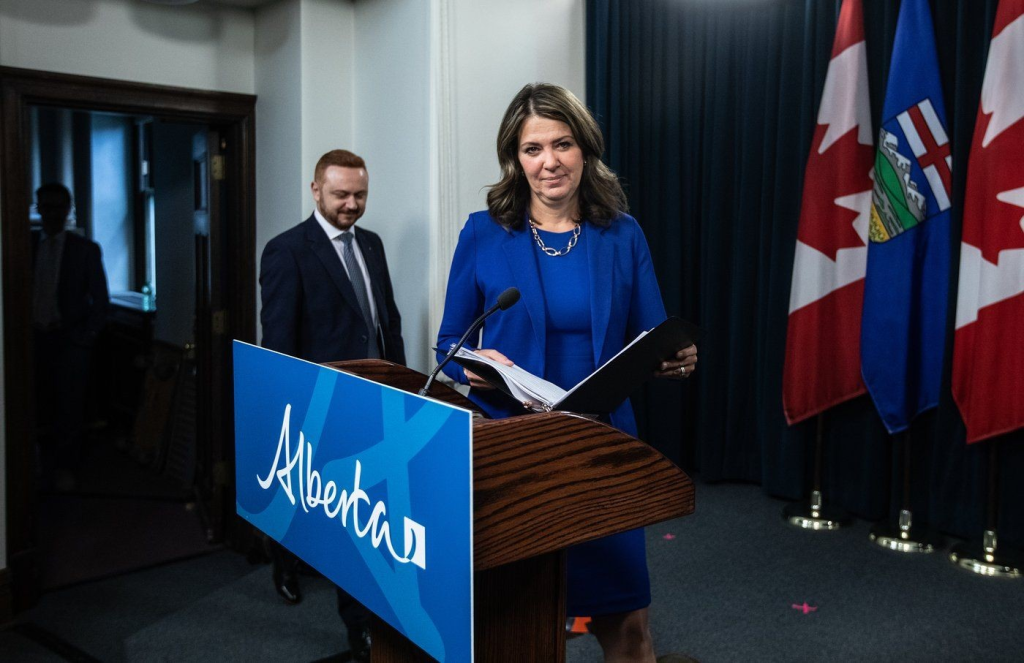Edmonton program repairs, restores damaged, stained clothes at thrift stores

Posted June 20, 2025 4:55 pm.
Last Updated June 23, 2025 11:37 am.
With the growth of online shopping and fast fashion, thrift stores are seeing a boom in donations.
While that may seem environmentally friendly, avoiding textile waste, not all can be recycled and reused, and they just end up in the trash.
It is a problem for Edmonton’s MCC Thrift. They get 200 to 300 bags filled with clothes every week, with 85 to 90 per cent able to be resold. The rest could add to the growing issue of textile waste in Canada.
“We are really reproducing way too many clothes. They’re not stopping to think of the impact on the environment and the water usage and everything else that all around the world where people need that water to drink for heaven’s sake,” said Sherry Galan, the general manager of MCC Thrift Edmonton.
That’s why the University of Alberta’s human ecology program partnered with the thrift store.
Through the ‘treat and clean’ project, tags indicate the items were cleaned or restored to keep them out of the landfill.

“Landfill contributes to greenhouse gas emissions, so more waste of things that go into landfills. We have a lot of synthetic fibres that are blended with others. They can shed and release small fragments and become microplastics, and they can just stay in the landfill for a really long time,” said Rachel McQueen, a human ecology professor at the University of Alberta.
A recent study out of the University of Waterloo found that Canadians dispose of nearly half a million tons of clothing every year, and researchers at the U of A saw this during their recent sorting project.
“Nearly 40 to 43 per cent of the garments that we found that got some stain in it or some damage like wear and tear that could be repaired,” said Wing Sem Mak, a research assistant with the treat and clean project.
As for clothes too damaged to be repaired or restored, they can be upcycled.
“Can you change it into something else? Making a pair of jeans into a denim jeans bag that then, if anything else that just becomes the one you take to the grocery store,” said McQueen.
Galan added, “It is producing things with stuff that we already have. So the benefit is we’re not using water again. We’re not recycling. We’re not using chemicals. We’re using what’s already in existence.”
The team will track sales from the treat and clean pilot project to see if the impact of items kept out of the landfill.








